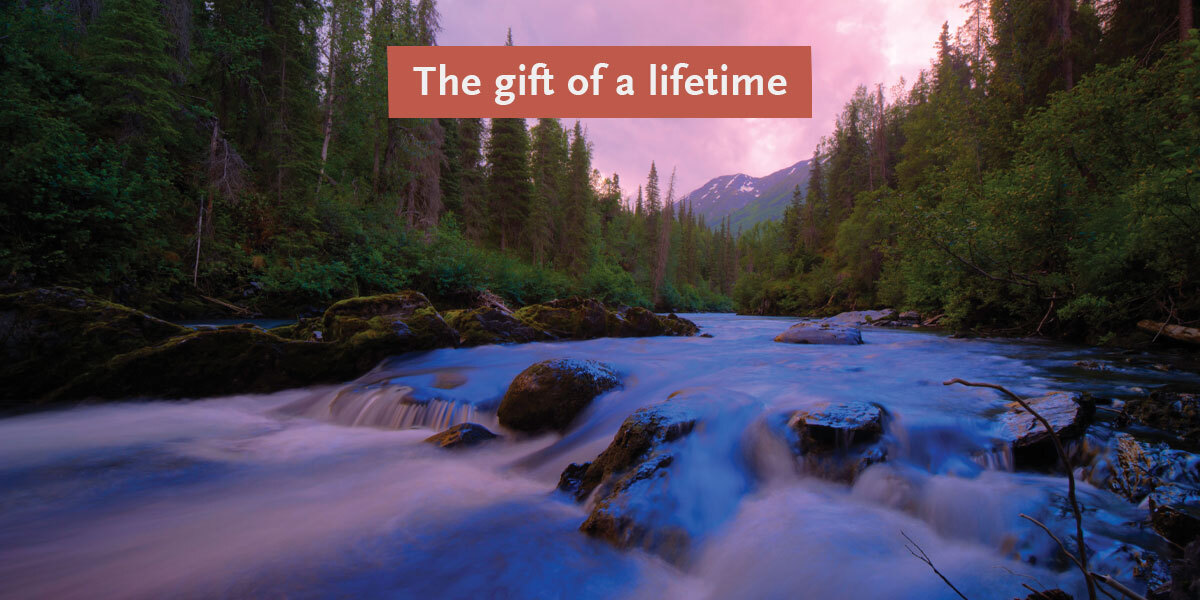By capturing the Alaskan frontier on film, a young photographer builds reverence.
Part of a new generation of adventure photographers, Chris Burkard has traveled to some of the planet’s most remote and rugged landscapes. His photography, which has appeared in outlets such as The New Yorker and National Geographic, transports viewers to places rarely seen and touched by humans. His images have both a power and a playfulness to them. We caught up with him to hear about his recent trip to the wilderness around Alaska’s Denali National Park, his experience visiting the Susitna River – one of Alaska’s salmon strongholds and site of an ongoing WSC campaign – and his thoughts on the importance of conservation.
You spend a lot of time in the backcountry – what’s the stickiest situation you’ve been in lately?

While I was in Norway I reached the verge of hypothermia. I had been taking photos in the water and the waves were just too good. Despite losing feeling in my limbs I kept shooting. Snow started to fall. I could hardly believe the conditions I was shooting in; it was so surreal. Before long, the cold got to me and I knew if I didn’t get out soon it would mean carrying me out unconscious. Thankfully, the guys were able to drag me out of the water. I was able to warm up and was fine, but nonetheless it was quite the eye-opening experience.
In terms of salmon and river health, we talk about the northward creep of decline and trying to reverse that. Do you notice that sense of increasing wildness and health as you go north? How does it show up on film?
Definitely. The Alaskan tundra is as wild as it gets. Denali National Park is such a perfect example of how protected land can flourish. Part of my goal is to help capture these untouched environments so as to inspire others to go experience and appreciate it for themselves. I wholeheartedly believe that when people truly experience these places, they’re able to come to an understanding of how important it is to preserve it. If you look through my images from my time up north, you’ll immediately recognize the rawness of it. The people native to the area live simply with a deep reverence of their surroundings and want nothing more than to share it in its unadulterated form for future generations.

An earlier generation of photographers founded iLCP as an outlet for conservation. What’s the feeling among your generation of millennial shooters about conserving wild places?
In the past, conservation efforts required enormous resources, backers and volunteers. It had always been a large undertaking to garner public support. Today, social media has provided a unique way to engage an audience. No longer do you need to print thousands of boring brochures to “educate” the masses. It’s all in the palm of your hand. I wholeheartedly believe that posting images of these beautiful places have inspired others to share in the same respect I have for nature. My hope is that people who see my work go to the places for themselves and experience it in person. This is the best way to inspire conservation: experience.
How does the Susitna stack up compared to other big and wild rivers you’ve been on?
I spent time briefly in Talkeetna on my way up to Denali National Park. I’ve photographed rivers from all over the world and the Susitna is definitely a power to behold. Unlike others I’ve shot, the sheer remoteness of it is probably what strikes me the most. The river serves as a lifeline to the wildlife that calls the region home and you can find animals roaming at every corner. It’s one of my favorite parts of my job, being able to go out and take photos deep in the wilderness and then bring them back to civilization and show my followers what the outdoors is really like.

Your photography transports viewers to distant wildernesses that many people never get to visit. What’s it like to share these places with the world?
When people come up to me and tell me how a photo I took inspired them to travel and see the world, I can’t ask for much more than that! I absolutely love hearing about people’s stories and seeing their interpretations of a place I went to. It definitely keeps me motivated to always be seeking out unknown places in hopes of sharing it with others.
As someone who has sought out intact and remote wilderness as a source of inspiration, do you feel a sense of responsibility after leaving these places?
Of course. I’ve been fortunate enough to witness something few others have. If I want to insure the conservation, then it’s vital that I make other people aware too. Whether they go there themselves or find other ways to contribute, I only hope that I’ve had some sort of impact for the betterment of these regions.
In your TedTalk you mentioned that you feel you’ve left a piece of yourself in each place you visited. In contrast, what did you take away from your trip to Alaska?
It truly feels like the last frontier, and I only got to see the tip of the iceberg. That’s one of the beauties of a place such as the Alaskan outback. There are endless possibilities of places to explore. I can’t wait to go back with the knowledge I’ve obtained and adventure to new spots!






